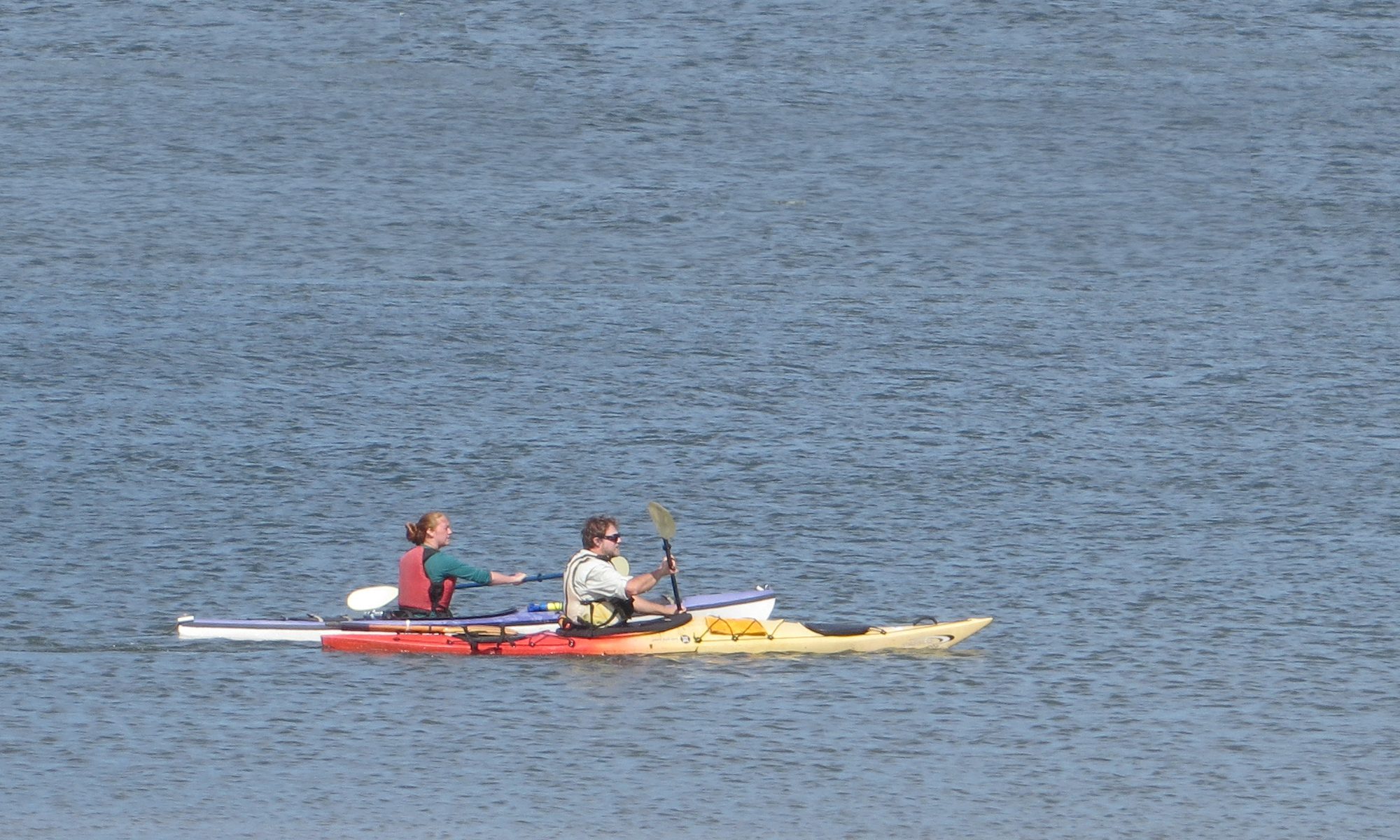This morning we woke up to an early snow and an early visitor…
Coyotes eat most everything they can find… from deer and rabbits to berries and tasty late season treats… apples…
Coyote’s are really adaptable canids (members of the dog family = Canidae); they are omnivores (= eat both plants and animals, like berries and rodents) that over time have adapted from living primarily in prairies and brushy areas to also living in cities, forests, and even along ocean shores.

Coyotes were originally found in central western North America (in yellow). As habitat was altered by human use and wolf populations (and other predators) were reduced, coyote populations expanded and now include almost all of North America and Central America.

Coyotes were first called “jackal”, “Spanish fox”, “prairie wolf”, and “brush”or “little wolf”. The name “coyote” comes from the Nahuatl name coyōtl; the 1st published use of “coyote” was in Clavijero’s “Historia de Mexico” (1780).
Genetic analysis shows that the relatedness of coyotes, or other canids, is not as simple as once thought.
Coyote facts:
- Scientific name: Canis latrans .(translates to barking dog)
- Collective Noun: Pack!
- Identification:
-
- Physical: 3′-4.5′ long (nose to tip tail), 20-45 lbs, similar coloring to a German Shepherd dog. Longer and narrower muzzle than most dogs. Wolves can look a LOT like coyotes from a distance, especially when young, but adult wolves have a much broader muzzle and larger nose pad.
- Voice: barks, howls, yips, woofs, and growls (will insert audio soon!).
-


- Scat: varies a LOT! Usually 3″-4″ long and ~1″ diameter. Scat from meat tends to be very dark and smooth, from plant matter variable and crumbly.
-
- Range: Almost all of North and Central America historical range western and central North America
- Habitat: fairly ubiquitous (= almost everywhere on land is possible)
- Food: Omnivore (eats plant and animals), commonly hunting at night.
- Natural Lifespan (wild): usually about 4-5 years, but up to 14 years.
- Breeding/Behavior: Sometimes mate for life, sometimes by year. Breeding takes place from early February through late March and pups are born from April through May. Pups stay in the den the first few weeks. Feeding growing pups can be very demanding, making this time of the year harder on coyote/human interactions;
- coyotes are very protective of den sites and pups.
- where coyotes are removed (hunted or trapped) the female coyotes will produce more pups per litter.
- Taxonomy (see image above): additional info.

